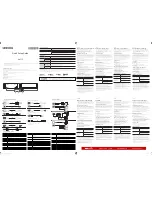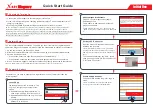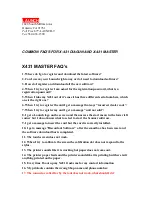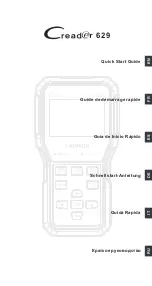
TEST CONDITIONS AND LIMITS
The magnetron is tested to comply with the following electrical specification.
Test Conditions
Oscillation
Oscillation
1
2
Heater voltage (for test) .
.
.
.
.
.
.
.
.
.
.
.
.
.
.
.
.
6.3
6.3
V
Anode current (mean)
.
.
.
.
.
.
.
.
.
.
.
.
.
.
.
.
.
4.0
0.8
mA
Duty cycle
.
.
.
.
.
.
.
.
.
.
.
.
.
.
.
.
.
.
.
.
.
0.0005
0.0001
Pulse duration (see note 7) .
.
.
.
.
.
.
.
.
.
.
.
.
.
.
.
0.5
0.05
m
s
VSWR at the output coupler
.
.
.
.
.
.
.
.
.
.
.
.
.
.
.
1.15:1
1.15:1
max
Rate of rise of voltage pulse (see note 4):
using hard tube pulser
.
.
.
.
.
.
.
.
.
.
.
.
.
.
.
200
200
kV/
m
s min
alternatively using line type pulser .
.
.
.
.
.
.
.
.
.
.
.
120
120
kV/
m
s min
Limits
Min
Max
Min
Max
Anode voltage (peak) .
.
.
.
.
.
.
.
.
.
.
.
.
.
.
.
7.5
8.2
7.5
8.2
kV
Output power (mean)
.
.
.
.
.
.
.
.
.
.
.
.
.
.
.
12.5
–
2.5
–
W
Frequency (see note 8)
.
.
.
.
.
.
.
.
.
.
.
.
.
.
9350
9400
–
–
MHz
RF bandwidth at
1
/
4
power .
.
.
.
.
.
.
.
.
.
.
.
.
.
–
5.0
–
50
MHz
Frequency pulling (VSWR not less than 1.5:1)
.
.
.
.
.
.
.
–
23
–
–
MHz
Stability (see note 9) .
.
.
.
.
.
.
.
.
.
.
.
.
.
.
.
–
0.1
–
0.1
%
Heater current .
.
.
.
.
.
.
.
.
.
.
.
.
.
.
.
.
.
.
.
.
.
.
.
.
.
.
.
.
.
.
.
.
.
. see note 10
Temperature coefficient of frequency
.
.
.
.
.
.
.
.
.
.
.
.
.
.
.
.
.
.
.
.
.
.
.
.
.
.
. see note 11
LIFE TEST
The quality of all production is monitored by the random
selection of tubes which are then life-tested under Test
Conditions Oscillation 1. If the tube is to be operated under
conditions other than those specified herein, e2v technologies
should be consulted to verify that the life of the magnetron will
not be impaired.
End of Life Criteria
(under Test Conditions Oscillation 1)
Anode voltage (peak) .
.
.
.
.
. 7.5 to 8.5
kV
Output power (peak) .
.
.
.
.
.
.
16
kW min
RF bandwidth at
1
/
4
power .
.
.
.
.
.
5.0
MHz max
Frequency
.
.
.
.
.
.
.
9350 to 9400
MHz
Stability (see note 9) .
.
.
.
.
.
.
.
1.0
% max
NOTES
1. With no anode input power.
For average values of pulse input power greater than
40 W the heater voltage must be reduced within 3 seconds
after the application of HT according to the following
schedule:
V
h
= 0.08 (110
7
Pi) volts
where Pi = average input power in watts.
The magnetron heater must be protected against arcing by
the use of a minimum capacitance of 4000 pF shunted
across the heater directly at the input terminals; in some
cases a capacitance as high as 2
m
F may be necessary
depending on the equipment design. For further details see
the Magnetron Preamble.
2. For ambient temperatures above 0
8
C. For ambient
temperatures between 0 and
7
55
8
C the cathode pre-
heating time is 90 seconds.
3. The various parameters are related by the following
formula:
Pi = i
apk
x v
apk
x Du
where Pi = mean input power in watts
i
apk
= peak anode current in amperes
v
apk
= peak anode voltage in volts
and Du = duty cycle.
4. Defined as the steepest tangent to the leading edge of the
voltage pulse above 80% amplitude. Any capacitance in
the viewing system must not exceed 6.0 pF.
5. The maximum rate of rise of voltage for stable operation
depends upon detailed characteristics of the applied pulse
and the pulser design. The specified maximum rating applies
to typical hard tube pulsers. For minimum starting jitter and
optimum operation, the recommended rate of rise of voltage
for most line type pulsers is from 70 to 120 kV/
m
s.
6. The anode temperature measured at the point indicated on
the outline drawing must be kept below the limit specified by
means of a suitable flow of air over the anode body and
waveguide attachment brackets which serve as cooling fins.
7. Tolerance
+
40%.
8. Other frequency ranges can be supplied on request.
9. With the magnetron operating into a VSWR of 1.15:1.
Pulses are defined as missing when the RF energy level is
less than 70% of the normal energy level in a 0.5%
frequency range. Missing pulses are expressed as a
percentage of the number of input pulses applied during
the period of observation after a period of 10 minutes
operation.
10. Measured with heater voltage of 6.3 V and no anode input
power, the heater current limits are 0.43 A minimum,
0.60 A maximum.
11. Design
test
only.
The
maximum
frequency
change
with
anode
temperature
change
(after
warming)
is
7
0.25 MHz/
8
C.
MG5239T, page 2
#
e2v technologies























